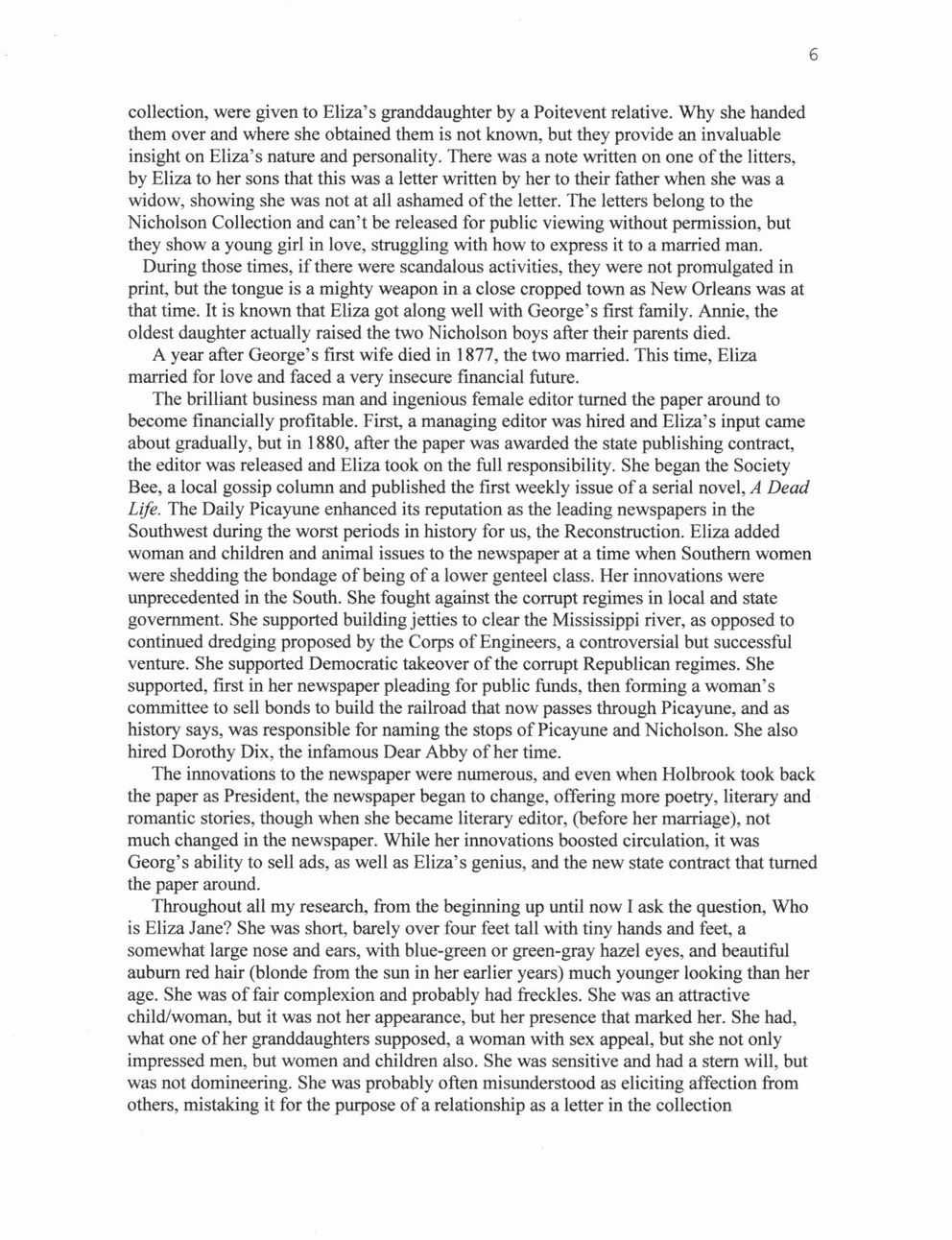This text was obtained via automated optical character recognition.
It has not been edited and may therefore contain several errors.
6 collection, were given to Eliza?s granddaughter by a Poitevent relative. Why she handed them over and where she obtained them is not known, but they provide an invaluable insight on Eliza?s nature and personality. There was a note written on one of the litters, by Eliza to her sons that this was a letter written by her to their father when she was a widow, showing she was not at all ashamed of the letter. The letters belong to the Nicholson Collection and can?t be released for public viewing without permission, but they show a young girl in love, struggling with how to express it to a married man. During those times, if there were scandalous activities, they were not promulgated in print, but the tongue is a mighty weapon in a close cropped town as New Orleans was at that time. It is known that Eliza got along well with George?s first family. Annie, the oldest daughter actually raised the two Nicholson boys after their parents died. A year after George?s first wife died in 1877, the two married. This time, Eliza married for love and faced a very insecure financial future. The brilliant business man and ingenious female editor turned the paper around to become financially profitable. First, a managing editor was hired and Eliza?s input came about gradually, but in 1880, after the paper was awarded the state publishing contract, the editor was released and Eliza took on the full responsibility. She began the Society Bee, a local gossip column and published the first weekly issue of a serial novel, A Dead Life. The Daily Picayune enhanced its reputation as the leading newspapers in the Southwest during the worst periods in history for us, the Reconstruction. Eliza added woman and children and animal issues to the newspaper at a time when Southern women were shedding the bondage of being of a lower genteel class. Her innovations were unprecedented in the South. She fought against the corrupt regimes in local and state government. She supported building jetties to clear the Mississippi river, as opposed to continued dredging proposed by the Corps of Engineers, a controversial but successful venture. She supported Democratic takeover of the corrupt Republican regimes. She supported, first in her newspaper pleading for public funds, then forming a woman?s committee to sell bonds to build the railroad that now passes through Picayune, and as history says, was responsible for naming the stops of Picayune and Nicholson. She also hired Dorothy Dix, the infamous Dear Abby of her time. The innovations to the newspaper were numerous, and even when Holbrook took back the paper as President, the newspaper began to change, offering more poetry, literary and romantic stories, though when she became literary editor, (before her marriage), not much changed in the newspaper. While her innovations boosted circulation, it was Georg?s ability to sell ads, as well as Eliza?s genius, and the new state contract that turned the paper around. Throughout all my research, from the beginning up until now I ask the question, Who is Eliza Jane? She was short, barely over four feet tall with tiny hands and feet, a somewhat large nose and ears, with blue-green or green-gray hazel eyes, and beautiful auburn red hair (blonde from the sun in her earlier years) much younger looking than her age. She was of fair complexion and probably had freckles. She was an attractive child/woman, but it was not her appearance, but her presence that marked her. She had, what one of her granddaughters supposed, a woman with sex appeal, but she not only impressed men, but women and children also. She was sensitive and had a stem will, but was not domineering. She was probably often misunderstood as eliciting affection from others, mistaking it for the purpose of a relationship as a letter in the collection

Pearl Rivers Presentation by Don Wicks 06